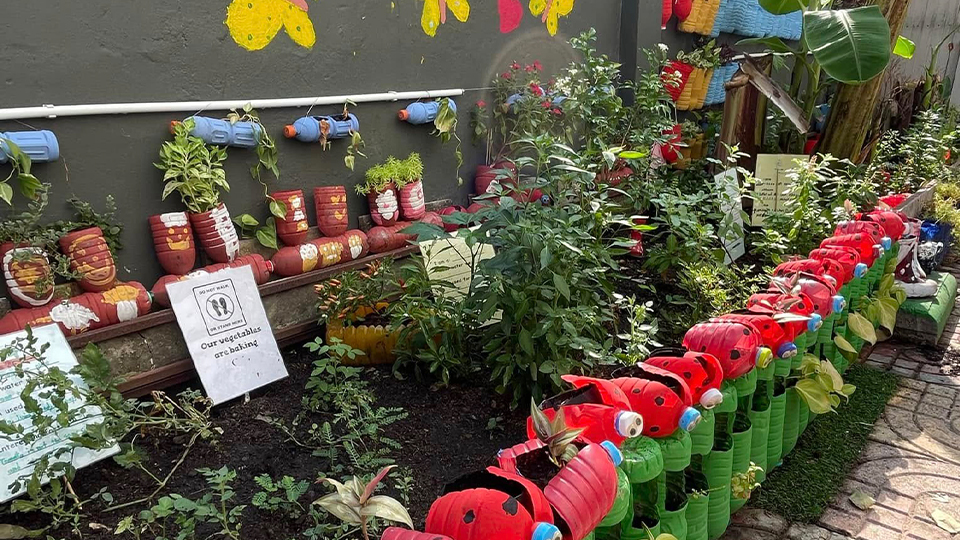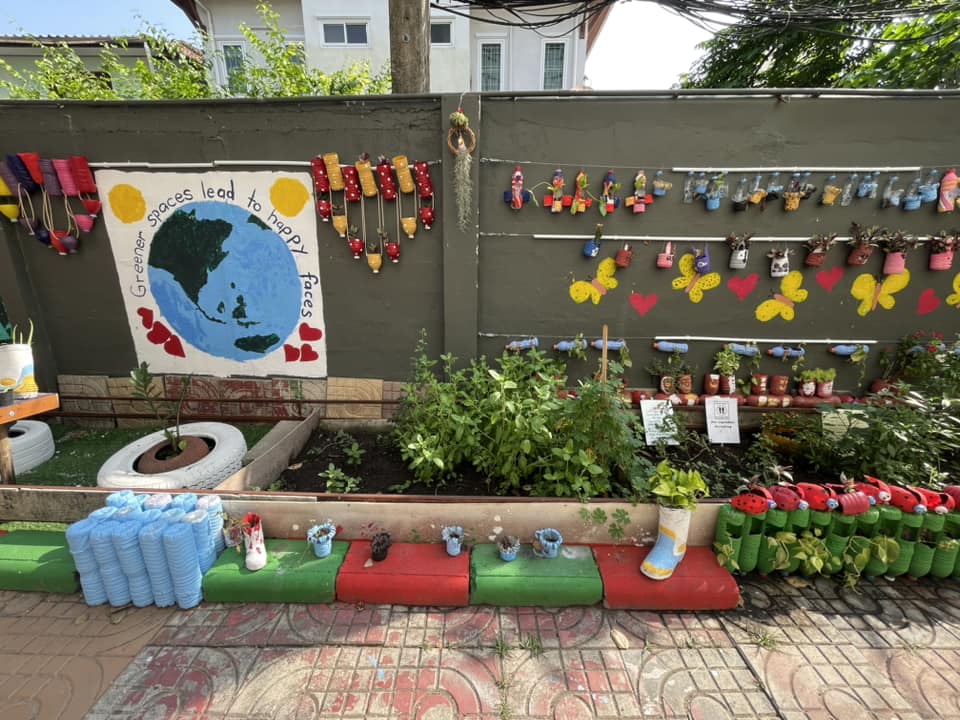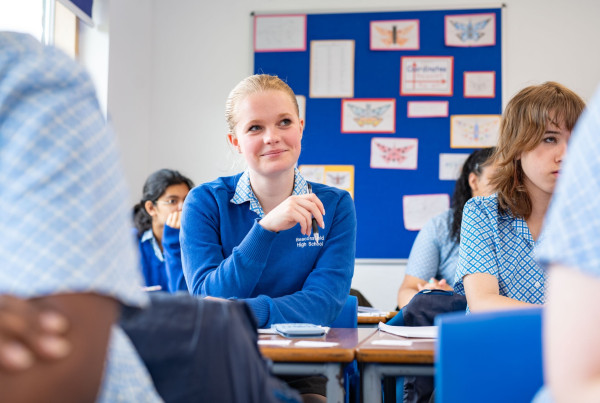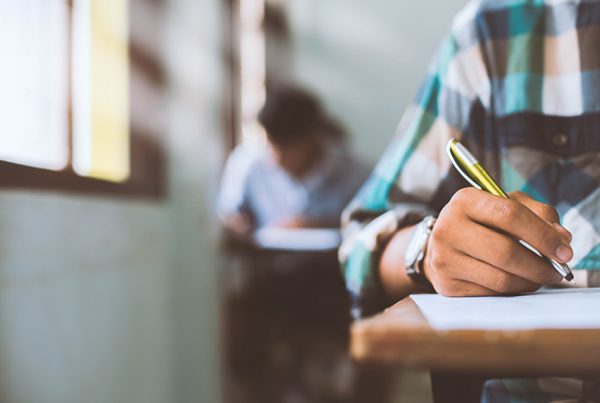The following article comes from Dr. Mari Simpson, Vice Principal at Emirates National Schools, UAE.
A story of inquiry, community, and transformation led by six-year-olds who proved that small hands can plant big change.
When young learners are given agency, the results can be extraordinary. In a recent sustainability project guided by the driving question, “How can greener spaces lead to happy faces?”, a group of Grade 1 students transformed an unused area beside their playground into a thriving garden — a living classroom they proudly called the Tuski Garden.
What began as a patch of bare ground evolved into a vibrant green haven filled with laughter, learning, and love for the planet. This project became a reflection of what sustainability truly means: caring for the earth, each other, and the community we share.
The journey started with curiosity. Students asked thoughtful questions:
- How does air pollution affect our health?
- Is the air quality indoors the same as outdoors?
- How can we make our play area more enjoyable for everyone?
These “need-to-know” questions became the foundation for a transdisciplinary exploration that connected core subjects to real-world impact.
In Mathematics, students collected and interpreted data, measured area and height, and used graphs to visualise their findings. Science lessons explored plant structures, sunlight patterns, and engineering design as children planned the garden layout.

In Social Studies, they examined how people rely on their physical environment and how communities can take action to improve it.
English Language Arts lessons tied it all together: students wrote informative texts about their process, participated in collaborative discussions, and shared their reflections on sustainability. Each subject came alive through purpose, reinforcing that knowledge is most powerful when applied to authentic challenges.
To celebrate the school’s multicultural community, students integrated Chinese, Thai, and English into their project. Working collaboratively, they created trilingual garden rules, watering directions, and information cards describing each herb and plant.
This multilingual approach not only strengthened literacy skills but also deepened cultural awareness and inclusion. Visitors to the garden can now read about sustainability and plant care in three languages — a living testament to how language connects people and ideas across cultures. It reinforced for students that being a global citizen means communicating and caring beyond borders.
The project’s most inspiring feature was its community spirit. Parents were invited to bring a herb or flowering plant to contribute, planting them alongside their children as a symbol of shared commitment. Each family’s plant represented growth—of both the greenery and the child who nurtured it through their school journey.

Staff and community experts guided students in selecting suitable plants, designing eco-friendly layouts, and understanding how greenery improves air quality. Art and Design & Technology teachers helped students upcycle materials into sustainable art pieces and create design sketches for the garden’s greenhouse. Meanwhile, Social-Emotional Learning sessions encouraged reflection on global citizenship, empathy, and environmental responsibility.
This collaboration turned the Tuski Garden into more than a project—it became a living partnership between students, families, and educators united by purpose.
The project concluded with a joyful Opening Ceremony, where students presented their transformed space to the school community. They proudly explained how they collected data, made design decisions, and worked together to create an inviting garden.
As they looked around at their handiwork—the herbs, flowers, recycled art pieces, and smiling faces—it became clear that they had achieved far more than environmental change. They had cultivated a sense of belonging, agency, and pride.
The Tuski Garden continues to grow, serving as a natural learning hub where future students can observe, care for, and connect with nature. Its legacy will flourish for years, reminding all who visit that meaningful learning often begins with small, hopeful hands.
This project illustrates that sustainability education is not reserved for older students. With the right environment, even six-year-olds can think critically, act compassionately, and collaborate for lasting impact.
Through inquiry, creativity, and community partnership, these Grade 1 students learned that they are not too young to make a difference. They discovered that every plant, every idea, and every act of care contributes to a greener, happier world.
When children lead with curiosity and heart, they remind us that the future of sustainability is already in bloom.

Author
Dr. Mari Simpson, Vice Principal at Emirates National Schools, UAE
Dr. Mari Simpson is an accomplished international educational leader specializing in school improvement and organizational transformation. With extensive experience leading schools across Asia and the Middle East, she has successfully driven school-wide initiatives focused on wellbeing, inquiry-based learning, and innovative instructional design. Dr. Simpson’s leadership is grounded in evidence-based practice and a deep commitment to empowering teachers and students to create, innovate, and think beyond traditional boundaries. Her transformative work continues to inspire educational communities to cultivate environments where curiosity, creativity, and wellbeing thrive together.




